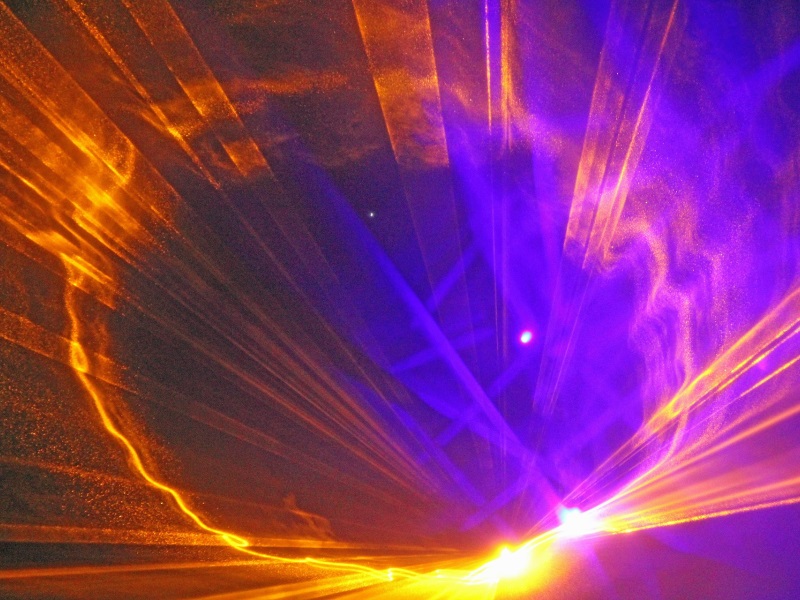- Home
- Science
- Science News
- 'Portable Lasers the Key to Next Generation Sensors'
'Portable Lasers the Key to Next-Generation Sensors'

Capable of emitting broadband wavelengths on demand, the device is smaller than a penny and works at room temperature.
"We can access any frequency in the laser's range on demand at room temperature, which is ideal for sensing applications," said lead researcher Professor Manijeh Razeghi.
It can also emit light at frequencies within +/- 30 percent of the laser central frequency, which has never before been demonstrated in a single-laser diode.
Nearly all chemicals, including explosives, industrials and pollutants, strongly absorb light in the mid-infrared wavelength region, which is often called the "fingerprint region" for chemicals.
But lasers that work within this range have limitations. Larger, optically pumped lasers are too complex to use out in the field, and compact, lightweight diode laser sources have a limited spectral range.
Now, the new laser device can make detecting chemicals easier.
The findings were published online in the journal Optics Express journal.
For the latest tech news and reviews, follow Gadgets 360 on X, Facebook, WhatsApp, Threads and Google News. For the latest videos on gadgets and tech, subscribe to our YouTube channel. If you want to know everything about top influencers, follow our in-house Who'sThat360 on Instagram and YouTube.
Related Stories
- Samsung Galaxy Unpacked 2025
- ChatGPT
- Redmi Note 14 Pro+
- iPhone 16
- Apple Vision Pro
- Oneplus 12
- OnePlus Nord CE 3 Lite 5G
- iPhone 13
- Xiaomi 14 Pro
- Oppo Find N3
- Tecno Spark Go (2023)
- Realme V30
- Best Phones Under 25000
- Samsung Galaxy S24 Series
- Cryptocurrency
- iQoo 12
- Samsung Galaxy S24 Ultra
- Giottus
- Samsung Galaxy Z Flip 5
- Apple 'Scary Fast'
- Housefull 5
- GoPro Hero 12 Black Review
- Invincible Season 2
- JioGlass
- HD Ready TV
- Laptop Under 50000
- Smartwatch Under 10000
- Latest Mobile Phones
- Compare Phones
- HMD 150 Music
- HMD 130 Music
- Honor Power
- Honor GT
- Acer Super ZX Pro
- Acer Super ZX
- Motorola Edge 60 Stylus
- Samsung Galaxy XCover 7 Pro
- HP Omen Max 16
- HP OmniBook 5
- Samsung Galaxy Tab Active 5 Pro
- Oppo Pad 4 Pro
- Oppo Watch X2 Mini
- Garmin Instinct 3 Solar
- Xiaomi X Pro QLED 2025 (43-Inch)
- Xiaomi X Pro QLED 2025 (55-Inch)
- Nintendo Switch 2
- Sony PlayStation 5 Pro
- Whirlpool 1.5 Ton 3 Star Inverter Split AC (SAI18K38DC0)
- Whirlpool 1.5 Ton 5 Star Inverter Split AC (SAI17B54SED0)

















